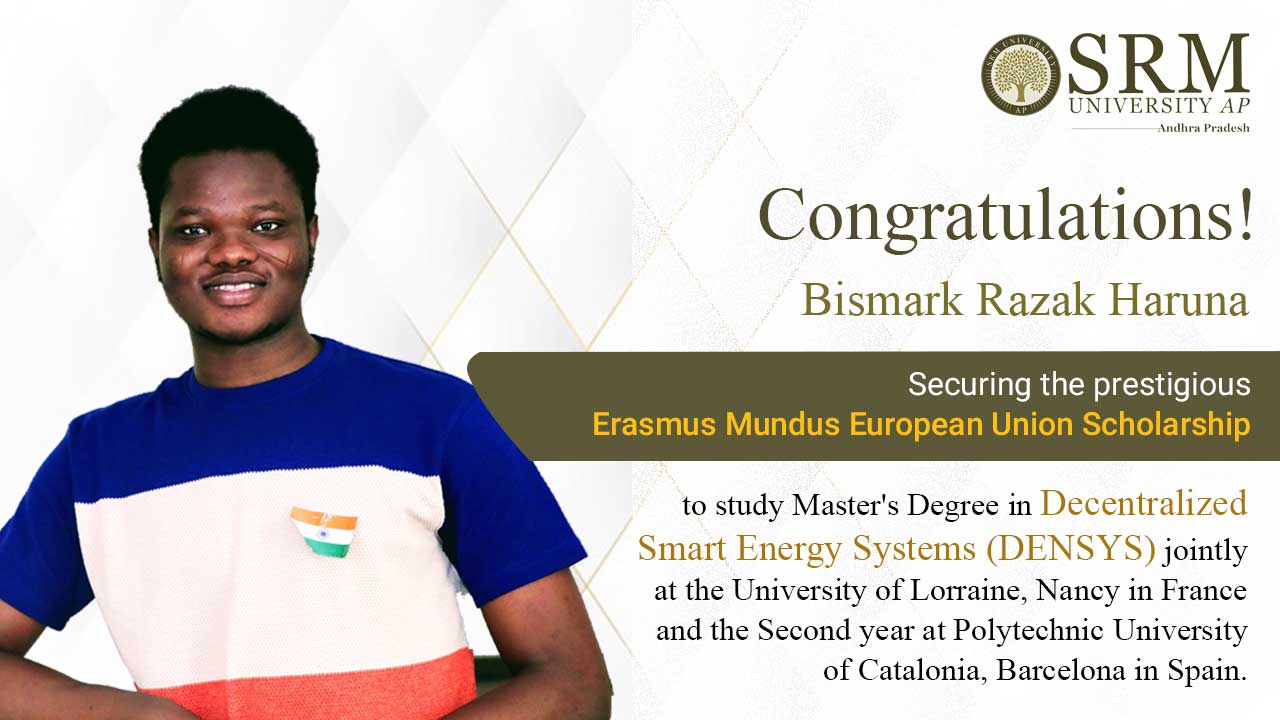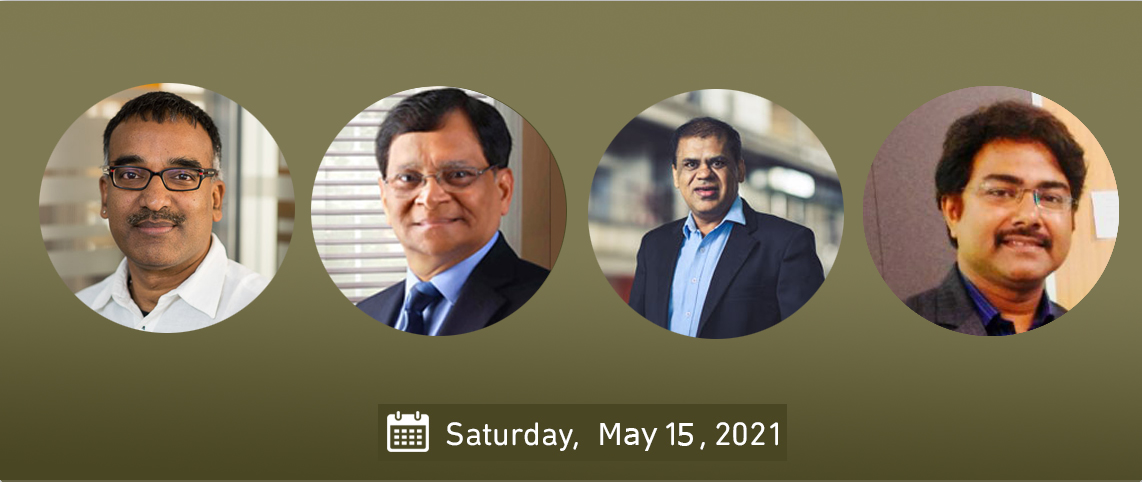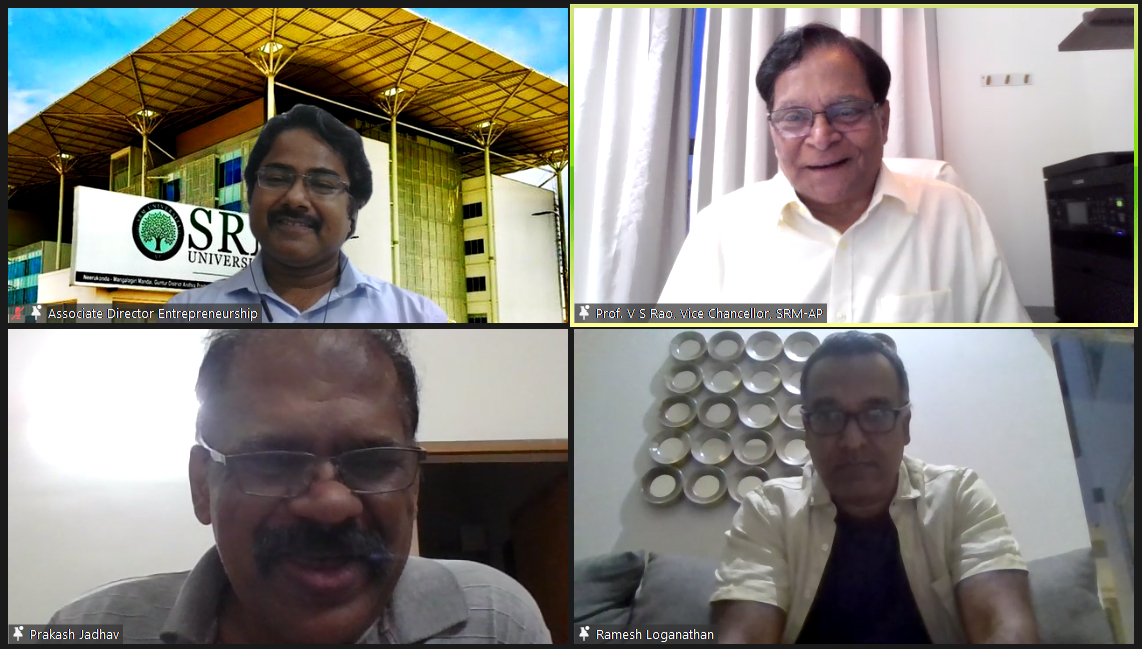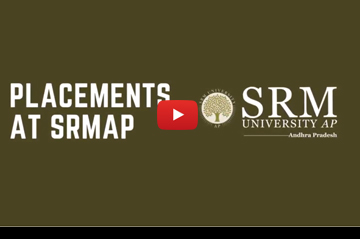SRM University-AP Student earns Erasmus Mundus Scholarship 2021
 Since its inception, SRM University-AP, Andhra Pradesh, has retained its exalted heights of excellence and brilliance. Avid students over the years have brought laurels to the organisation with impressive research work, outstanding academic performance or Guinness World Record for spectacular artistry. Bismark Razak Haruna, a B. Tech Final Year Student at the Department of Mechanical Engineering, is deemed to be bestowed on the highly prestigious Erasmus Mundus scholarship. The globally acclaimed European Union-funded scholarship will help Bismark pursue the joint master’s degree programme in Decentralised Smart Energy Systems (DENSYS) in renowned universities of Europe.
Since its inception, SRM University-AP, Andhra Pradesh, has retained its exalted heights of excellence and brilliance. Avid students over the years have brought laurels to the organisation with impressive research work, outstanding academic performance or Guinness World Record for spectacular artistry. Bismark Razak Haruna, a B. Tech Final Year Student at the Department of Mechanical Engineering, is deemed to be bestowed on the highly prestigious Erasmus Mundus scholarship. The globally acclaimed European Union-funded scholarship will help Bismark pursue the joint master’s degree programme in Decentralised Smart Energy Systems (DENSYS) in renowned universities of Europe.
Bismark sets an example by being the first Ghanaian to get into the DENSYS program. He expressed that as part of the mobility scheme of the programme, he would pursue the first year at the University of Lorraine, Nancy, France, and continue the final year at the Polytechnic University of Catalonia, Barcelona, Spain. The Erasmus Mundus Scholarship help students enrol into the world’s best universities for masters and doctoral programmes with substantial benefits. Bismark shared his thoughts, “I welcome the opportunity to play an important role in increased electrification in Sub-Saharan Africa through the integration of renewable energy sources for a low carbon society”.
Approximately 392 aspirants applied for the DENSYS program globally, and out of 23 students from 17 countries, Bismark secured his place. Erasmus Mundus Scholarship Programme covers the expenditure involving the tuition fee, insurance, participation in activities such as the lab courses, excursion, research projects, financial support for housing, feeding, transportation and installation fee as well.
While speaking of his success, Bismark expressed his gratitude towards the SRM University-AP for consistently providing him with golden opportunities and resources. “From conceptualising undergraduate research project to studying abroad at UC Berkeley, the University has been a constant support. A special thanks to my motivators and mentors- Dr Prakash Jadav, Dr Satya Pramod Jammy, Dr Sarfaraz Hussain Halkarni, Dr Ram Kuresh Thakur, Dr Srabani Basu, Ms Revathi Balakrishnan for grooming and guiding me throughout the journey. I convey my sincere thanks to my buddies as well for helping me out with the scholarship application”, Bismark added while being ready for exploring the next chapter of his life in the European Union.
- Published in Departmental News, Mechanical Engineering NEWS, News, Students Achievements
SRM University-AP celebrates the exorbitant success in Maiden Batch Placement 2021
 SRM University-AP initiated its journey in the year 2017, and now it is time to bid farewell to the maiden batch of students. The university is proud to share that 100% of our graduating students are placed successfully. About 500 companies visited SRM campuses during the Placement drive, including Amazon, Adobe, Infosys, HealthRx, Bank of America, Standard Chartered and many more who have offered exhilarating opportunities. Students of the founding batch have received one or more job offers in reputed companies with the highest CTC of ₹29.5 LPA, an average salary of ₹6.2 LPA, and over 57% offers were Super Dream and Dream offers. The Campus Placement drive is still on and best efforts are put in to ensure that all the students are placed.
SRM University-AP initiated its journey in the year 2017, and now it is time to bid farewell to the maiden batch of students. The university is proud to share that 100% of our graduating students are placed successfully. About 500 companies visited SRM campuses during the Placement drive, including Amazon, Adobe, Infosys, HealthRx, Bank of America, Standard Chartered and many more who have offered exhilarating opportunities. Students of the founding batch have received one or more job offers in reputed companies with the highest CTC of ₹29.5 LPA, an average salary of ₹6.2 LPA, and over 57% offers were Super Dream and Dream offers. The Campus Placement drive is still on and best efforts are put in to ensure that all the students are placed.
Dr P Sathyanarayanan, Founder and President, established this university with a vision of providing quality education to the students who will not only be able to secure a position of their choice but also add value to society. It has been an incredible journey so far, and the students made the university proud with their excellence in academics and extra-curricular activities. “Acknowledging the needs of the hour, SRM University-AP is dedicated to devising strategies to mould students to become global leaders,” said Dr Sathyanarayanan.
The university took it as a challenge to find the best job offers for its deserving students. The Department of Corporate Relations and Career Services (CR&CS) was deeply involved in providing students with the best training and placement opportunities. SRM University-AP believes that every student is filled with numerous possibilities, and they can scale greater heights if their potentials are explored wisely. The students of the maiden batch proved the vision.
“We always bring the best to our students when it comes to their training and personality development. The thoughtfully crafted training sessions, in close coordination with industry and corporate experts, rigorous aptitude tests, mock interview rounds help students to excel in the interviews and placement rounds”, informed Mr M S Vivekanandan, Assistant Director, CR&CS.
Sri Ritika Katragadda, a final-year student in the Department of Computer Science and Engineering, secured the highest pay package. She expressed her joy, saying, “Though we were the first graduating batch of SRMAP, the outstanding experience in the past four years in academics and placement training made us so confident that we cracked the long hiring process with ease”.
Prof V S Rao, Vice-Chancellor, SRM University-AP, opined, “Our university is the flag-bearer when it comes to inculcating quality, value and excellence among the students in order to make them an asset to the society. The maiden batch placement programme was bound to be a success as it was not a job hunting for our students, rather, finding opportunities to contribute to the society, putting into use their intellect and innovative ideas”.
- Published in CR&CS, CR&CS NEWS, News
SRMAP-TBI launches the first cohort of 36 start-up ventures

Technology Business Incubator of SRM University-AP launched the first venture cohort with 36 selected startup business ventures, on May 15, 2021, in the presence of the special guest of honour from industry, Prof Ramesh Loganathan, Head of co-innovation and outreach at IIIT Hyderabad and Ex-Chief Innovation Officer of the Telangana State Innovation Cell (TSIC).
“From the initial years onwards, SRM University-AP is focused to make entrepreneurs who can be the leaders of tomorrow. The University signed an MOU with the University of California, Berkeley to design the curriculum to promote entrepreneurship,” Said Prof V S Rao, Vice-Chancellor, SRM University-AP, in his welcome speech.
Advancing the proceedings of the event, the guest of honour Prof Ramesh Loganathan gave a brief understanding of the scope and future of entrepreneurship in India and the global scenario. “The entrepreneurial journey should start with identifying the problems in the ecosystem. A great example can be the face recognition software that started with the idea of capturing student attendance in colleges. Similarly, the budding entrepreneurs should identify such similar problems, do thorough market research and then prepare the business plan. The price of the product/idea should matter the last.”
SRM University-AP, Andhra Pradesh established the ‘Innovation, Design and Entrepreneurship Academy (IDEA)’ as part of the strategic alliance with UC Berkeley to create an academy combining their Sutardja Center for Entrepreneurship and Jacob Center of Design and Innovation to foster the culture of innovation, design and entrepreneurship among the students of all streams including engineering, liberal arts and sciences, and management. Dr Prakash Jadav, Associate Professor and Head of IDEA opined, “It is exciting to see so many students submitting their business ideas in the first business cohort. I am sure that with our guidance and mentorship, they all can reach new heights in setting up their ventures in the industry.”
62 teams, which comprises 192 students applied for the opportunity. After a rigorous screening and evaluation on various parameters like innovation, scalability and commercialization, only 36 teams/ ventures were selected to be a part of the SRM TBI’s first cohort.
 The selected ventures will be mentored and supported for a period of a minimum 12 months where they will be facilitated with infrastructure support, mentoring and networking support, seed fund and innovation fund support, hardware and software support, industry connectivity, learning resources, market exposure and several others.
The selected ventures will be mentored and supported for a period of a minimum 12 months where they will be facilitated with infrastructure support, mentoring and networking support, seed fund and innovation fund support, hardware and software support, industry connectivity, learning resources, market exposure and several others.
The selected ventures will be mentored and supported for a period of minimum 12 months will all the services of a regular technology business incubator. SRM TBI will also provide an opportunity to pitch to the investors, connects with industry experts, market linkage and a global network of mentors. The startups developing prototype and MVP can apply for the Product validation track and pre-revenue/ revenue stage startups can apply for the Market validation track. Each of the 36 startup ventures will get hands-on mentoring and guidance from the mentors and experts from their respective working areas. The startups go through physical interactions through contact sessions at SRM AP and virtual interaction with mentors through online workshops during the program.
After the Q & A session Mr Udayan Bakshi, CEO SRM TBI & Associate Director Entrepreneurship, cordially thanked all the speakers and panellists for their efforts to make the SRM TBI cohort launch a grand success. He also highlighted that TBI will not limit to just this batch of students or to the SRM University-AP, but shall extend its vision and activities to the entire ecosystem
Prediction of End-Time of COVID-19 Spread in AP
In the current pandemic situation, a pertinent question is an estimate of the time by which virus spread could be contained and normalcy would return. In this context,Prof.Narayana Rao, Pro Vice Chancellor, SRM University – AP initiated the study. Dr. Soumyajyoti Biswas of SRM University AP, along with 4 B.Tech Students have carried out an interesting study to predict the end time of COVID-19 spread in the state of Andhra Pradesh. The study employed Susceptible – Infected – Recovered (SIR) Model, making use of the information on the COVID-19 affected people and the recovered number of people, which the Government of AP makes it available through the control command center. SRM Team made use of this data, employed SIR Model and applied the methods of Machine Learning. Study reveals that by July 15th 2021, the rate of infection in AP will be below 100 per day.
With the assumption that the decay rate of infection is same as the growth rate, the model predicts that the number of infected people could be 10,000 (May 21), 15,000 (May 30), 1000 (June 14), 500 (June 23) and 100 (July 15)
The above report has been submitted to the Special Chief Secretary to the Hon’ble Chief Minister of Andhra Pradesh.
Media Panorama
- Published in News, Physics News, Research News







